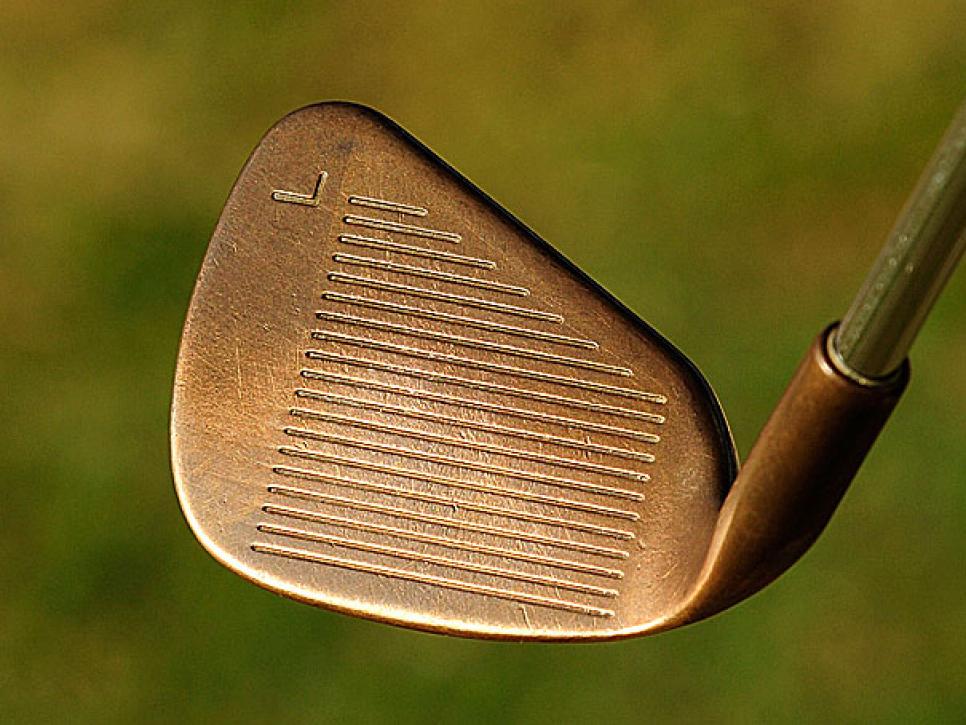News
Common Ground

The decision by a handful of players, including Phil Mickelson, to use Ping Eye 2 wedges in competition set off a firestorm on tour.
It's over.
Last month during the height of the Ping Eye 2 furor (which included Phil Mickelson being accused of "cheating" by Scott McCarron for using a pre-1990 Eye 2 wedge with aggressive grooves at the Farmers Insurance Open), Ping chairman and CEO John A. Solheim said he was "willing to discuss a workable solution to this matter that would benefit the game and respect the role innovation has played over the long history of golf."
A little more than a month later, that workable solution has been reached.
A notice from the USGA on March 8 announcing a forum on equipment rulemaking this fall was quickly followed by a joint announcement from Ping and the PGA Tour stating that, "Ping will waive its rights that prevent the PGA Tour from prohibiting the use of pre-April 1990 Ping Eye 2 irons and wedges that do not meet the 2010 Condition of Competition from being played at PGA Tour professional competitions.
"The waiver goes into effect March 29 and applies to the PGA Tour, Champions Tour and Nationwide Tour. As a result of a request from the USGA, Ping will also apply the waiver to the U.S. Open in June. The PGA Tour will then adopt a Condition of the Competition that does not provide an exception for the pre-April 1990 Ping Eye 2 irons."
"John Solheim and Ping had a terrific opportunity to do something very positive and significant for the game of golf and we very much appreciate his willingness to take this action," said PGA Tour Commissioner Tim Finchem.
When Solheim spoke last month of a workable solution, he was adamant about keeping Eye 2's conforming for amateurs -- something that was achieved with this resolution.
"We all believe it is in the best interests of golf," Solheim said in the statement. "It levels the playing field on the PGA Tour and resolves a very unfortunate situation that we predicted would happen when the USGA first proposed the new groove rule more than two years ago. It keeps in place all of our other rights established in the 1993 PGA Tour settlement and the 1990 USGA settlement, including ensuring amateurs will continue to be able to play their pre-April 1990 Eye 2's at all amateur events played under the USGA Rules of Golf." Solheim added that several solutions were considered since meeting with USGA executives on February 10 in Dallas.
Although the resolution of the sticky Ping Eye 2 situation is the immediate benefit to the game (and Solheim should be commended for making it happen in a timely manner), in the long-term, the forum may hold more significance. The USGA has long held that its notice-and-comment protocol gave manufacturers and others stakeholders in the game the opportunity to be heard. Many equipment-makers, however, Solheim included, felt it insufficient.
In announcing the forum, which will be held at the USGA Golf House in Far Hills, N.J. at a date to be determined, the USGA said, "Now that the first rollback of golf equipment in more than 75 years has been initiated, we believe that this is an appropriate time to evaluate the process utilized for formulating equipment rules."
According to the notice, the main purpose of the forum is to allow all stakeholders in the game (including manufacturers, players, media, golf organizations and other parties) the opportunity to make their views on equipment rulemaking known to the USGA, and to each other -- something Solheim alluded to in a statement after that meeting with USGA representatives, including new president Jim Hyler, last month.
"I'm encouraged by their willingness to openly discuss some of the challenges the golf industry faces relating to equipment issues," Solheim said. "We left the meeting with an understanding we would continue to seek a solution that benefits golfers and acknowledges the importance innovation plays in the game."
However, Dick Rugge, the USGA's senior technical director, dismissed the notion that there was a correlation between the Ping dispute and the announcement, calling the forum a "standalone event."
"We wouldn't do something like this if we weren't ready to hear these ideas," said Rugge. "Maybe there is a better way to do things, and if we can, we will. … If people have ideas on our process, we want to hear those ideas. Even if it's Joe Golfer who has some thoughts -- this is the time to hear it."
Still, it is difficult to look at some of the proposed topics for discussion at the forum without feeling the USGA's conversation with Solheim shaped some of the agenda. Among the topics are:
The process by which new equipment rules and rule changes are proposed.
Timing and communication of proposed equipment rule changes.
Consideration of the impacts of potential rule changes and the evaluation, after an appropriate time period, of the results of implemented rule changes.
The decision-making process, including communication of the reasons for enacting new equipment rules or changing existing equipment rules.
The appropriate balance between technology and skill in player performance.
"I've been consistent in voicing my concerns over the last several years about the challenges of the current rulemaking process and the needs to improve it to the benefit of golfers," said Solheim. "I am hopeful this will be a significant first step in realizing this goal. We're looking forward to the forum and will be an active participant when it convenes sometime this fall. Our goal is to help ensure innovation remains an important part of golf's tradition."